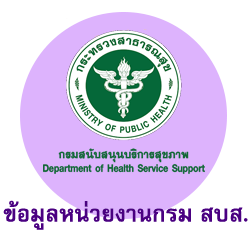การรักษาโรคแผลเนื้อเน่าหลังผ่าตัด ด้วยพลาสมาอากาศเย็นกลุ่มงานศัลยกรรม โรงพยาบาลลำพูน
คำสำคัญ:
พลาสมาอากาศรักษาแผล, การรักษาแผลเรื้อรัง, นวัตกรรมรักษาแผลบทคัดย่อ
แผลเรื้อรังเป็นแผลที่หายยากหรือหายช้ากว่าระยะเวลาหนึ่งเพราะขบวนการหายของแผลถูกขัดขวาง ผู้ป่วยแผลเนื้อเน่า เป็นแผลเรื้อรังที่พบมากเป็นอันดับ 1 ใน 3 ของกลุ่มงานศัลยกรรม โรงพยาบาลลำพูน และจัดเป็นกลุ่มโรคสำคัญของกลุ่มงาน การวิจัยครั้งนี้เป็นการวิจัยเชิงกึ่งทดลอง (Quasi-experimental research) พัฒนาการรักษาโรคแผลเนื้อเน่าหลังผ่าตัด เพิ่มเติมด้วยนวัตกรรมการรักษาบาดแผลด้วยพลาสมาอากาศเย็น โดยใช้เครื่อง Compact Air plasma Jet รุ่น Nightingale เพื่อพัฒนาการรักษาผู้ป่วยโรคแผลเนื้อเน่าหลังผ่าตัด กลุ่มงานศัลยกรรม โรงพยาบาลลำพูน ต่อการลดจำนวนวันนอน อัตราตาย อัตราการตัดขา ค่าใช้จ่ายในการรักษาภาวะแทรกซ้อน ได้แก่ อาการปวด อาการเนื้อเยื่อไหม้ การวิเคราะห์ข้อมูลแบ่งเป็น 2 ส่วน ได้แก่ ข้อมูลส่วนบุคคล วิเคราะห์ข้อมูลทางสถิติโดยใช้สถิติเชิงพรรณนา คือ แจกแจงความถี่และหาค่าร้อยละ ได้แก่ จำนวน วันนอน อัตราตาย อัตราการตัดขา ภาวะแทรกซ้อนได้แก่ อาการปวด อาการเนื้อเยื่อไหม้ ค่าใช้จ่ายในการรักษา เปรียบเทียบกับ ก่อนการพัฒนา โดยใช้สถิติ Paired t-test
ผลการศึกษาพบว่ากลุ่มตัวอย่างผู้ป่วยโรคแผลเนื้อเน่าหลังผ่าตัดที่รักษาเพิ่มเติมด้วยพลาสมาอากาศเย็น เปรียบเทียบ กับก่อนการพัฒนาในหัวข้อจำนวนวันนอนโรงพยาบาลลดลงจาก 11 วัน เหลือ 5 วัน อัตราตายลดลงจาก 5.09 เหลือ 0.13 อัตราการตัดขาจาก 1.19 เหลือ 0.3 ค่าใช้จ่ายในการรักษาลดลงร้อยละ 48 เปรียบเทียบกับก่อนการพัฒนา โดยใช้สถิติ Paired t-test ลดลงอย่างมีนัยสำคัญทางสถิติที่ค่า p-value < 0.01 ภาวะแทรกซ้อน ได้แก่ อาการปวดพบร้อยละ 0 อาการ เนื้อเยื่อไหม้พบร้อยละ 0 อื่นๆ อาการเหม็นกลิ่นคาวพบร้อยละ 25
เอกสารอ้างอิง
A.Thrawut. (2000). Research Methodology, Behavioral and Social Sciences Experimental Methods. First printing, Ubon Ratchathani: Ubon Ratchathani Rajabhat Institute (In Thai)
Bishop et al. (2004). Importance of moisture balance at the wound-dressing interface. Retrieved July 22, 2017, from http://europepmc.org/abstract/med/12715483
British Columbia Provincial Nursing Skin and Wound Committee. (2015). Guideline: Wound Bed Preparation for Healable and Non-Healable Wounds in Adults & Children1. Retrieved May 2, 2017, from https:// mail-.com/attachment/u/o/ ?view
Caroline Dowsett and Heather Newton. (2005). Woundbed preparation :TIME in practice. Retrieved January 2, 2017, from http://www. woundsinternational.com/media/issues/122/ files/content _86.pdf
Cutting & White. (2002). Avoidance and management of peri-wound maceration of the skin. Retrieved July 22, 2017, from http://europepmc.org/abstract/med/med/ 12238719
Falanga V. (2000).. Principles of Moist Wound Healing. Retrieved September 2, 2015, from http://www.southwesthealthline.ca/ healthlibrary_docs/H.1.IntroMoist Wound Healing.pdf
K. Downwan. (22015). Wound Care & Wound Dressing. Retrieved 1 June 22017, from http:// www.rihes.cmu.ac.th/news/wp-content/
uploads/2015/03/Wound-Care-Wound-Dressing-edit-%............%8C.pdf (In Thai)
M Pornprom. (2010). Advanced Surgical Wound Care Technology Dressing. Retrieved 1 April 2017, from https://www.bangkokhospital. com/images/downloads/advanced .pdf
National Health and Medical Research Council (NHMRC). (1998). A guide to the development implementation and evaluation of clinical practice guidelines . Retrieved Februaryr 3, 2017, from www.ausinfo.gov.au/general/ genhottobu.htm
Pamela S. Grim, MD; Lawrence J. Gottlieb, MD; Allyn Boddie, RN; et al. (1990).Hyperbaric Oxygen Therapy .Retrieved May 8, 2017 from http://jamanetwork.com/journals/jama/ article-abstract/381546
Resar R et al. (2005). Using a bundle approach to improve ventilator care processes and reduce ventilator-associated pneumonia. Retrieved July 22, 2017, from http://www.ihi. org/resources//Pages/ImprovementStories/ WhatIsaBundle.asp
Schultz, Mozingo, Romanelli, & Claxton. (2005). Wound healing and TIME; new concepts and scientific applications. Retrieved July 22,
, from http://onlinelibrary.wiley.com/ doi/10.1111/j.1067-1927.2005.1304S1.x/full
Schreml et al. (2010). Oxygen in Acute and Chronic Wound Healing. Retrieved May 8, 2018. From https://pubmed.ncbi.nlm.nih.gov/20394633/
Sibbald RG et al. (2000). Preparing the wound bed--debridement, bacterial balance, and moisture balance. Retrieved May 8, 2017, from http://europepmc.org/abstract/med/ 11889735
T. Puthithorn and B Teerewan. (2019). Air plasma jet for treating chronic wound infections. Retrieved 1 April 2020 From http://www. thaiphysoc.org/article/96/ (In Thai)
Templeton. (2005). Management of chronic wounds: the role of silver-containing dressings. Retrieved July 22, 2017, from http://cmapspublic3.ihmc.us/rid=126635823 2317_1177275179_12935/9Management% 20of%20chronic%20wounds.pdf
ดาวน์โหลด
เผยแพร่แล้ว
วิธีการอ้างอิง
ฉบับ
บท
การอนุญาต
ลิขสิทธิ์ (c) 2022 Journal of Department of Health Service Support-วารสารวิชาการกรมสนับสนุนบริการสุขภาพ

This work is licensed under a Creative Commons Attribution-NonCommercial-NoDerivatives 4.0 International License.



